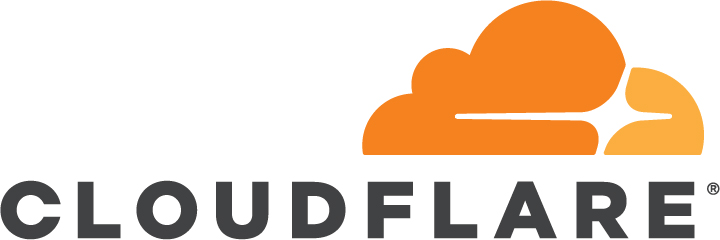The Internet was Built for This
John Graham-Cumming, CTO of Cloudflare, offers insight into the changing traffic patterns and changing online behavior through the COVID-19 crisis and beyond.

© vitacopS | istockphoto.com
dotmagazine: John, looking at worldwide data flows in your monitoring of data traffic, what general trends have you seen during the COVID-19 crisis?
John Graham-Cumming: What we have seen is that wherever there's been a shelter-in-place, work-from-home, lockdown situation, there has been a very rapid increase in Internet use, going anywhere from 20 up to 100 per cent increase in load on the Internet, particularly during the daytime.
Typically, when you look at Internet traffic in a country, you would normally see a peak around the early evening when people get home from work. That has changed with the effect of working from home. We now see a peak in the morning as well. And that seems to correspond to people starting their work day from home. But it also has to do with the children using the Internet from home. And so that's a new pattern.
The other thing is when you look at geography, it's very clear where work-from-home has taken effect – you can see areas like business districts, industrial parks, and airports, where there's been a dramatic decrease in the amount of Internet use, and a very large increase in residential districts, suburbs, and so on.
dot: Has there been anything that took you by surprise?
Graham-Cumming: The rapid growth was a surprise – because on our network, we've seen a year's worth of growth in about three months. And any business which is able to go online has decided to go online. So, you see a massive increase in people signing up for online shop builders, delivery services, etc..
Very early on in each locked-down area, we have tended to see a big increase in people looking for information about children: schooling information, how to entertain their children at home, and so on. Obviously, you also see a lot of people looking for information about health, and cooking. In the U.K., it’s been gardening. And then massive decreases in things like sports scores, travel, and looking for a new place to live. But perhaps the most dramatic I saw was that there has been a very big increase for some of the sites that do online cards. I think people have been sending each other wishes using electronic cards.
You really see every form of communication on the Internet growing – chat, video, group meetings, chat rooms, and discussion boards. It just reflects people's desire to communicate with each other.
dot: Looking at business services, how have companies coped with lockdown, and what business-related services have shown the greatest increase in demand?
Graham-Cumming: We certainly saw a peak on any sort of online collaboration, but also online tools in general, like online spreadsheets. And any sort of communication related to work. You'll be familiar with the fact that Zoom has had an incredible increase in its usage. Same with any other tool that's out there that helps to communicate at work. Cloudflare has a product called Cloudflare for Teams, which is a service that lets people use their work applications – what they would normally use at work – remotely. And we decided to give it away for free in March, lasting up until at least September, to help people with the pandemic, because one of the areas where business tools have had a really hard time with the pandemic is VPNs. A lot of companies had VPNs for anyone who is remote to get into the business, and in most instances, they were really not scaled to deal with the whole company going to work from home. And people have had to send their entire workforce home. So, tools like Cloudflare for Teams, which lets you do that, have seen a huge uptake.
I suspect that's not going to go away at the end of the pandemic. I think this is something that's just here to stay – that people will be able to access their work applications from wherever they are without difficulty. That was already happening, but we're hearing from companies that had already had plans to digitalize, and that these plans have been accelerated by anything up to a year and a half to get it done this year.
dot: Do you see 2020 as a watershed moment for the digitalization of our economy?
Graham-Cumming: As I said, I think that every business that was thinking about a digital transformation has suddenly seen those plans speed up in a major way. We have customers who were rolling out our Cloudflare for Teams product slowly – they had a plan for it – and then said, right, all of our 10,000 employees are going on your product, tomorrow: Help us!
I think we've just seen what was inevitable, which was digital transformation has simply been accelerated enormously.
dot: How much of a challenge was that for your people to get multiple 10,000-person companies online overnight?
Graham-Cumming: Well, we got together our teams internally, and there was a period where a lot of people were working very hard to on-board as many people as possible, just so that the customers could get their staff working from home, get things moving.
dot: Have you seen any evolution in business behavior post- lockdown?
Graham-Cumming: One thing is that Internet use has plateaued – so, it's gone up, and it's just now operating at the new, very high level. We have seen some slight decreases in areas where the lockdown has been released. For example, you see a little bit of a decrease of use in Italy. But honestly, it mostly seems to be staying at the new level.
It's a little hard for us to predict what post-lockdown looks like, because nobody's really gone back to normal at this point. But our suspicion is that people have really come to rely on the Internet for everything from talking to their parents to doing their work, to educating their children, and that there will be a significant amount of that that just remains after this is over.
dot: What have been the challenges for the functioning of Internet infrastructure?
Graham-Cumming: Well, here's the interesting thing: The Internet was really built for this kind of situation, in the sense that it was built to deal with a great variety of traffic and a great deal of change. So, the fact that people suddenly moved from doing most of their Internet during the day in an office to doing it at home really is just the normal functioning for the Internet.
At the core of the Internet, the major networks really aren't experiencing a problem with load. Bear in mind that the load we're seeing, although it has increased enormously, is not like the load you might see during a massively popular sporting event, like the World Cup or the Olympics, or even Eurovision. There, you see spikes of traffic that are simply enormous, so the infrastructure was already there to deal with sudden increases in load.
What it has done is make clear that, if this is going to be the new normal, over time we will all need additional capacity, because at some point we're going to have this new normal plus the Olympics. So, there will be capacity upgrades over time.
So basically, at the core of the Internet there's really no issue. You have to look at the edges of the Internet to see where the issues might be. And you have two edges to look at here.
Firstly, you have the applications themselves that you're using. It was probably no surprise in the very early days of the major lockdowns that some Internet services, some of the communication platforms, had a few hiccups. You'll see such hiccups because the folks at the application level are dealing with an increased amount of load.
But anyone who has had to deal with that increased load has now scaled it. And luckily, we have these superb cloud services that allowed you scale. If you were built on the cloud, then you could just simply buy more capacity when you needed it. The cloud really helped here – in a way that it is not just the Internet that has saved the day, but also the cloud. Anyone who was using on-premise servers had a much harder time, because they would have to buy new hardware to scale.
The other edge is the last mile: It's getting into your and my home. And that, I think, is the area where there has probably been the most stress, because depending on the way the network was built out by the particular ISP, depending on the technology they were using, you could end up in a situation where they never expected all their subscribers to be using so much Internet at the same time, constantly. As a result, there were some local issues.
I think one of the reasons why the EU asked the major streamers to slow down their streaming speed early in the lockdown was that the pressure on the edge networks was a concern in some places. Actually, it wasn't pressure just from streaming, but I think people were worried multiple things were happening at the same time. There are two big stresses on the Internet: There's streaming of a lot of stuff simultaneously, and there are software updates – particularly like a major operating system update or a major game update. I think the EU was looking to work with the industry to avoid a situation where, for example, three major gaming platforms release a new game on the same day on download, because of the load that this places on the edge networks.
So by and large, the Internet has been functioning really well. We've looked at data around this and we've seen the effects of increased load in some locations. But honestly, the Internet has been the reliable sidekick in all of this, going through this crisis.
dot: Have there been any lessons learned from this crisis, especially for the design of infrastructure?
Graham-Cumming: Well, I do think that the important thing is that the Internet is a global piece of infrastructure and that, as the load increased on the Internet, we were able to move traffic around. We were able to scale things in the cloud. The resilience of the Internet comes from that global nature. I think there needs to be some thinking about how that contrasts with things around digital sovereignty, and the need to try and keep things all in one location. When we start to think about what makes the Internet great, its flexibility comes from that international, shared, distributed nature. Moving to something which is all in one location makes it more brittle. As a result, I think there will need to be some thinking over the next months and years about how that resilience, which comes from the nature of the Internet, and ideas of digital sovereignty play together.
John Graham-Cumming is CTO of Cloudflare and is a computer programmer and author. He studied mathematics and computation at Oxford and stayed for a doctorate in computer security. As a programmer, John has worked in Silicon Valley and New York, the UK, Germany and France, and he is now based in Cloudflare’s Lisbon office.
Please note: The opinions expressed in Industry Insights published by dotmagazine are the author’s own and do not reflect the view of the publisher, eco – Association of the Internet Industry.




